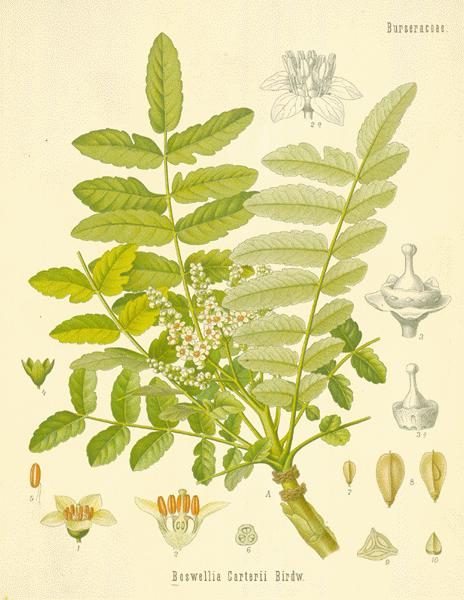At the beginning of April, as soon as the temperatures start to rise, the frankincense gatherers cut the frankincense trees in many places. The first 'cut' is called the tawqii and consists of paring off the outer bark of the branches and trunk. This causes a milky-white liquid to ooze from the tree which quickly solidifies and is left in this condition for 14 days or so. The second 'cut' which follows this period, produces resin of an inferior quality and the real harvest begins two weeks after the second 'cut'. With this third 'cut' the tree produces frankincense resin of yellowish color which is sold commercially in the market.
The 'cutting' of the frankincense trees calls for great skill. The harvest lasts for 3 months and the average yield of frankincense resin for one tree is around 10 kilos. The Governorate of Dhofar produces approx. 7,000 tones of frankincense annually
Omani frankincense, which is considered to be the finest quality in the world, is still much in demand in many countries. It is an important ingredient in the manufacture of incense which is burned on social occasions, in the manufacture of medicines, fragrant, powders, perfumes, candles as well as in halls of worship around the world.



No comments:
Post a Comment